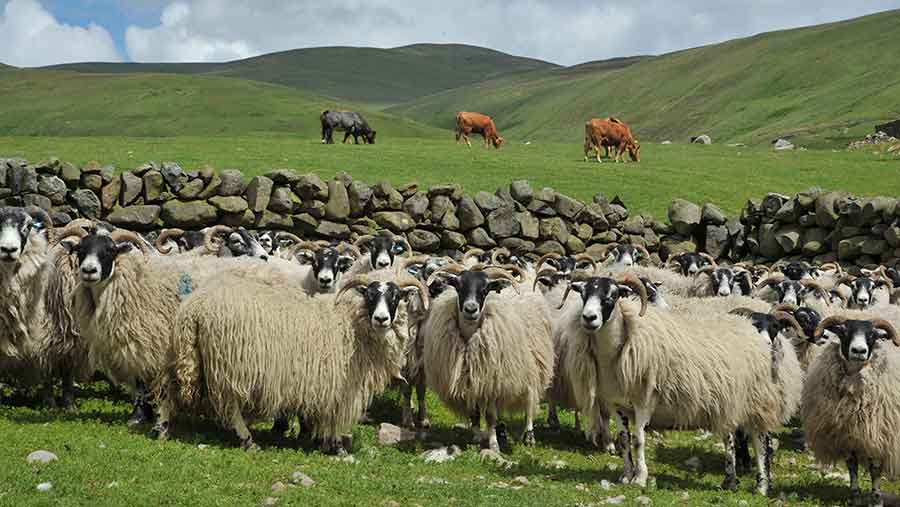Hill farmers call for increased sheep stocking rates
 © John Eveson/FLPA / imageBROKER/REX/Shutterstock
© John Eveson/FLPA / imageBROKER/REX/Shutterstock Any future uplands agri-environment policy should reassess stocking rates to better graze the landscape, argue hill farmers across the UK.
Calls to increase upland stocking rates were made by graziers championing the role of the hill ewe in maintaining iconic landscapes and rare flora and fauna.
Livestock farmers Jeff Gwillim, Powys; Robert Helliwell, Derbyshire, and John Blaney, County Antrim, all said their hills were being undergrazed.
See also: Sheep producers warn under grazing could kill hill farms
Swaledale breeder John Blaney, who runs a flock of 400 ewes across 240ha in the glens of Antrim, stressed how important hill ewe genetics were for grazing fell land, detailing research proving that crossing lowland breeds for hybrid vigour could threaten upland biodiversity.
This was because the area Scottish Blackface (SBF) and Swaledale ewes can graze by themselves in isolation would be lost when they were bred to Texels and Lleyns.
“Tough times have prompted people to start cross-breeding for hybrid vigour,” he explained.
A two-part study using GPS collars first looked at the effect of crossing a Scottish Blackface to a Swaledale, Cheviot, Lleyn and Texel on fertility, longevity and growth rate. It then looked at diet, habitat selection and social behaviour.
Hill grazing study
- SBF cross Lleyns and Texels spent very little time on blanket bog
- SBF sheep grazed on average 350m apart
- Lleyn- and Texel-crosses grazed 150m apart
- SBF grazed at higher altitudes and for longer
- SBF grazed 52% of their area
- SBF cross Texels grazed 16% of their area
Mr Blaney admitted overstocking between 1988 and 2003 was the result of headage payments, but said Northern Ireland’s native hill sheep numbers were now dropping.
“In the 10 years between 1998 and 2008, ewe numbers decreased in Northern Ireland from 1.4 million to 0.935 million and now undergrazing is our main concern.”
See also: Foraging patterns of sheep breeds key to hill management
For Jeff Gwillim, a fifth-generation farmer in the Black Mountains, there is a “fine line” between overgrazing and undergrazing.
He praised the work of the Black Mountains Land Use Partnership on heather regeneration, grazing land improvement and erosion control, but stressed that a hill in Wales without sheep on it is “not a natural site”.
He added: “Hill ewes live in a harsh environment, eating a wide variety of plants, and produce autumn lambs. People can then enjoy the landscape that is produced.”
But a solution to undergrazing will not be found easily, according to Mr Heliwell, who breeds Swaledales in High Peak.
“Sheep are not water,” he said. “They cannot be just turned off and on and the loss of a hefted flock is a retrograde step.”
The Environmentally Sensitive Area and Higher Level Stewardship schemes had been very useful, but Mr Heliwell said the new Countryside Stewardship Scheme had “little to offer” hill farmers.
